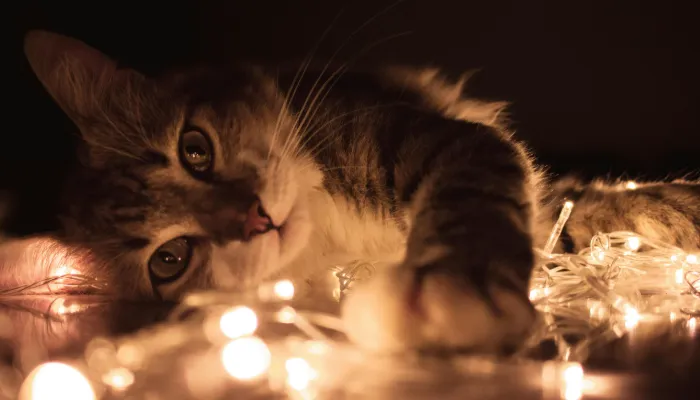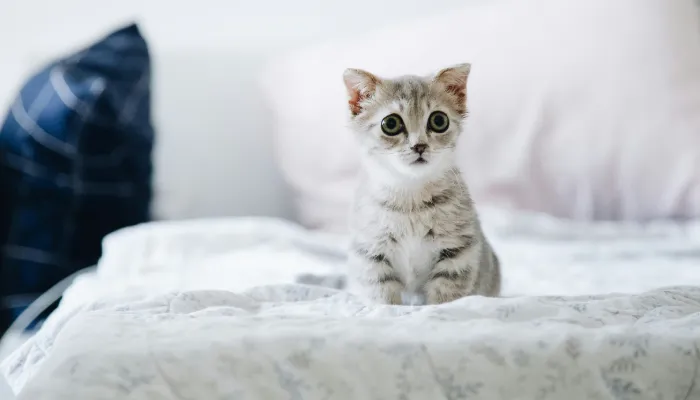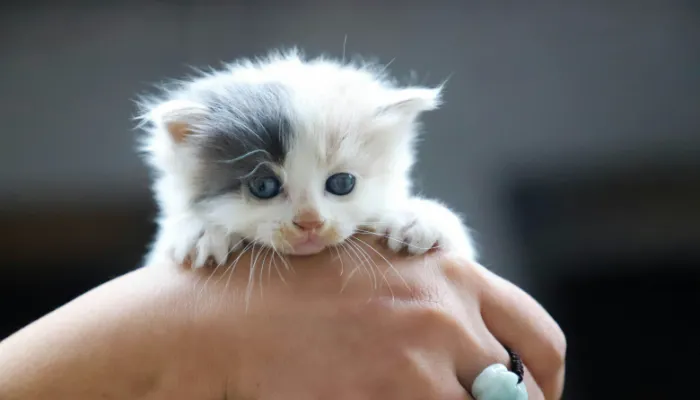Human to Cat Translator is a rather unusual gadget that claims to solve the puzzle of communication between humans and cats. With the rise of pet tools, this device supposedly interprets your cat’s cries, purrs, and even movements into human language.
This is very fascinating but at the same time, is it true or just a ploy to market their goods? In this article, we shall analyze how these tools work, how accurate cat translators are, and whether they can help make sense of the cat’s puzzles. Stay tuned as we dive deeper into the world of cat translator cat to human communication.

Human to Cat Translator: What’s the Buzz?
A ‘human to cat translator’ device, application, or tool is aimed at receiving a human utterance and converting it into something that they can supposedly communicate with the cats. Quite a number of companies have set out to make such products that are meant to provide easy two-way communication to humans and cats. The focus of such devices is to translate the modulations, pitch, and emphasis of human speech to a level where it can engage a cat.
How Does A Human To Cat Translator Work?
A good human to cat translator would rely primarily on vocal tone and emotional cues rather than body language. Felines are a lot more subtle and complex in their interactions as compared to dogs. Dogs, for instance, tend to respond to human language in some particular manner. Felines use a multitude of ways to engage with us, for instance:
- Meows: Cats tend to direct them at humans and pitch varies a lot.
- Purring: Indicate contentment, however, can also be a stress signal.
- Body Language: The use of tail, ears, and posture are a way of expressing feelings.
- Hissing or Growling: Maybe a sign of aggression, fear, or discomfort.
These vocalizations and movements could be a basis for a “human to cat translator” to transform human speech into cat-receptive tonal and emotional speech.
It is critical to comprehend that these translators are about much more than capturing the mere verbal exchanges between a human and a cat. The process in which human language is translated to something a cat might comprehend requires more nuance than simply transcribing words. Such a level of sophistication is beyond a cat’s capabilities.
The Science Behind Human to Cat Translator
Researching a potential cat language translator requires understanding the intricacies behind feline communication. Just like other animals, cats possess a wide array of vocalizations and different forms of body language. Many researchers have attempted to study how cats respond to certain sounds and actions, and the reality is, no one has fully grasped how deep their communication actually goes.
- Human’s Speech Versus Cat’s Response: In contrast to dogs, cats are unlikely to respond to a particular word communicative marker. Instead, cats will most likely respond to the emotional tone of the voice or particular sounds.
- Sensitivity to Tone among Felines: Aside from their obvious intelligence, cats are also sensitive to the emotional state of their human counterparts. Instead, if you speak to your cat in a calm or comforting voice, your cat may interpret it as petting. Alternatively, a strong voice could disturb your cat.
- Meow Interpretation: Cats cannot ‘talk,’ yet they have become accustomed to communicating their needs to us using a host of meows, each tailored to specific requirements. Each meow conveys a message like “Feed me,” “Pet me,” or “I’m annoyed.”
This means that a “human to cat translator” must take tonal interpretations rather than actual words. While such devices may further help cat owners train and discipline their pets, the possibility of finishing the communication gap between cats and humans is still a long journey to approach.
Is There a Real “Cat Translator” Out There?
Surely you have heard of the phrase ‘human to cat translator’ did no, but are fully aware of what it actually points to. This term typically refers to a device or application that professes to ‘know’ what the cat school translation vocals and gestures mean. The question is how precise can these tools be?
Examples of Cat Translator Technology
- Petpuls: Petpuls is one of the most popular examples of a cat and dog translator. It touts itself comes as a extremely intelligent cat and dog translator. It states that other than separating cat and dog sounds. Instead, it whole range of cats calling are divided into different emotions like happiness, sadness and anxiety. Moreover the application supplies with range of cats acclaims to help cat owners understanding their pets.
- MeowTalk: There’s an app, MeowTalk, which claims to interpret cat meows to human language. The app uses machine learning algorithms to analyze making cat sounds and predicts the best match based on the patterns. You can even “train” the app to recognize your cat’s voice.
These cat translator apps are smart, yet have their limitations. For example, while they provide a glimpse into your cat’s emotional state, specific words and phrases cannot be deciphered. The understanding is more general rather than specific.

Understanding the Limitations of Human to Cat Translators
Even though it may seem to be alluring to construct a flawless human to cat translator, one should be cognizant about modulating their anticipations. These technologies possess some crucial translation limitations:
- Context Based on Emotion: Felines emotively communicate by body movements and the tone of their voice. Anything which involves interpreting a meow or purr will be problematic because one has to account for the surrounding context.
- Real Word Existence Problem: No matter the animals communication changes in the environment, cats have no capability to respond to a particular phrase. Unlike dogs who understand a certain set of commands, a translator between humans and cats would be able to only convey emotion and tone, but definitely not words.
- Vocal Variation: Each meow has a contextual meaning for each cat. For instance, ‘I am hungry‘ translates to one particular meow from one cat, while an annoyed cat translates it when emitting meows. Up to a certain level, a translator can depict the differences, but on high levels, they would struggle to do so.
- Physical Signs: Each cat has a specific way of conveying messages. A cat assembly can twitch its tail when annoyed or arch its back when disturbed. What violence this type of behavior translates in human terminology is equally problematic.
Table: Key Differences Between Dogs and Cats in Communication
| Aspect | Dogs | Cats |
|---|---|---|
| Response to Words | Respond to specific commands (sit, stay) | Less responsive to specific words |
| Vocalizations | Barking, growling, whimpering | Meowing, purring, hissing |
| Body Language | Tail wagging, ear positioning | Tail flicking, ear rotation, body arching |
| Tone Sensitivity | Respond to tone and context of words | Respond to the emotional tone of the voice |
| Communication Style | More direct (simple signals) | More subtle and varied, often indirect |
Although this technology might seem to have great scope, it is crucial to keep in mind that we are not anywhere near achieving an all-encompassing and flawless translator. Let’s examine ways in which these devices can aid your daily activities with your feline.
Can a Human to Cat Translator Help You?
A human to cat translator might not completely decode the communication our feline friends use, but it can give you a general idea of the emotional state of your cat. By putting together the context of the meows and purrs of your cat, you might be able to reciprocate in ways that could deepen the relationship further. Let me explain:
- Emotional Insight: If your cat is meowing even during playtime, a translator could help identify if it is due to being hungry, frightened, or too hot.
- Better Communication: You can start moderating your own voice to better relate to your cat. For instance, when your cat is nervous, speaking in a calm voice may help.
- Improved Training: Emotional understanding could help design training sessions more effectively. You might discover which pitch works best in getting your cat to listen and learn.
Even if a human to cat translator isn’t perfect, it will certainly enhance any kind of relationship between humans and pets. Now, let’s look at the other type of technology — a cat translator cat to human translator.

Cat Translator Cat to Human – A Different Perspective
Analyzing the potential of a cat translator cat to human is often as intriguing as a human to cat translator. This field of technology seeks to interpret a cat’s vocal sounds and body movements to understand what needs to be communicated. The introduction of AI-based applications such as Petpuls and MeowTalk is making this technology sophisticated. But, it will take a lot of effort to completely solve the puzzle of cat communication.
Is There a Future for Cat Translators?
Cat translators, be it human to cat or cat translator cat to human do hold potential for the future. The growth in AI, developments in machine learning, and much-needed innovation in pet care technology will ensure that these devices are able to translate a cat’s behavior with a higher degree of accuracy and detail.
Until that time comes, cat enthusiasts will be forced to depend on observing their pets and using trial and error.
FAQs Related Human to Cat Translators
Ever wondered if you can truly communicate with your cat using a “human to cat” translator? Let’s dive into the most frequently asked questions about these apps and whether they really bridge the gap between you and your feline friend.
1. Do human-to-cat translator apps actually work?
Some of these applications purport to transform human speech into cat speech, but scientific evidence for this claim is not present. Nonetheless, they will surely attract the attention of your cat and provoke some form of reaction.
2. How do these apps create cat sounds?
Most of these applications rely on pre-recorded meows, purrs and chirps synthesized from general feline sounds. Instead of talking to your cat, they make noises that they think will elicit a response from the cat.
3. Can using a cat translator improve my bond with my pet?
Even if these apps don’t allow you to ‘talk’ to your feline companion, you can still engage with it in a more entertaining way. However, the most preferred method of communication is interpreting your cat’s actual vocal and behavioral signals.
At the end of the day, a cat translator is more of an entertaining tool than a true language bridge. The best way to connect with your cat? Observe, learn, and respond to their unique behaviors!
Conclusion
A human to cat translator is thought-provoking, nonetheless, the technology is still a bit away from our reach. Some apps and devices claim to interpret cat sounds and aid in human and pet communication, but the reality is that we do not have a complete working human-to-cat translator. To communicate with your cat adequately, you must appreciate its body language, tones, and feelings.
With respect to the “cat translator“ that translates cat sounds into some human dialect, it is enhanced, but we are still far from a true cat language decoder. It may not be able to give you a complete understanding of your cat’s emotions based on each meow, but as long as it gets close, it will give you hope for a human to cat translator. As we comprehend more about cats, we better relate to them, and we also get love from our pets without relying on a translation device.
Contents
- Human to Cat Translator: What’s the Buzz?
- The Science Behind Human to Cat Translator
- Is There a Real “Cat Translator” Out There?
- Understanding the Limitations of Human to Cat Translators
- Can a Human to Cat Translator Help You?
- Cat Translator Cat to Human – A Different Perspective
- FAQs Related Human to Cat Translators
- Conclusion
